Major Airline Pet Policies:
Flying can be stressful. Flying with your pet can be doubly stressful. Researching the pet policies of the major airlines will give you the advantage of being prepared.
Know the rules concerning:
♦regulation size of pet carriers,
♦in-cabin canine weight restrictions,
♦flying with service animals
♦breed restrictions
♦pet travel fees
Since most airlines will not accept snub nose canines in the cargo (due to respiratory health concerns) – especially during summer months (when cargo temperatures run high) Phoebe Rose, a large and lovely pug, travels exclusively in-cabin.
Weight limits for in-cabin canines usually do not exceed 20 pounds-however, Phoebe Rose is a certified emotional support therapy animal and therefore her weight is not an issue for traveling (but is still an issue for her vet).
Service animal criteria and documentation vary with airlines. If you plan to fly frequently with your furry baby-registration as a service animal could be a worthwhile investment.
We’ve experienced pet tolerant to pet indulgent on the same airline- but with different flight attendants.
Follow the links below to review each airline’s specific pet policies:
Alaska Airlines
Be sure to check the airline website for the pet travel policies well in advance of your departure date.
Airports
Pet Relief Stations: Great idea! Not all airports are this pet friendly-even airport personnel don’t always know where they are located- so its best to do your homework and check the airport website.
Animal Relief Areas – US Airports
Be advised that once you have gone through security -if you have to take your pooch outside to potty-you will need to go through security check again. Accidents will happen, so stash a few pee pee pads in your dog’s carrier and extra pet waste bags.
10 Tips for Flying courtesy of BringFido.com
1. BOOK EARLY
Most airlines only allow one or two dogs on each flight, so it’s important to book your dog’s ticket as soon as possible. Don’t buy your ticket until you call the airline and make sure there is a “seat” available for your dog on the flight. Once the agent has confirmed availability, reserve both your seats on the same ticket while you’re still on the phone with the agent.
2. FLY DIRECT
Book a non-stop, direct flight whenever possible and try to fly on a weekday when airports are typically less hectic. If your pet will be traveling in the cargo hold, it’s best to fly in the morning or evening during the summer, and midday during the winter to avoid extremely hot or cold temperatures.
3. VISIT THE VETERINARIAN
Make an appointment with your pet’s veterinarian for a check-up and make sure all vaccinations are up to date. Obtain a health certificate from your veterinarian dated within 10 days of departure. For travel outside the continental United States, additional planning and health care requirements may be necessary. Visit our International Pet Travel or contact the foreign office of the country you are traveling to for more information.
Whether your dog is a Chihuahua or a Great Dane, there’s a pet carrier to match. Carriers are available in both hard-sided and soft-sided. Soft-sided carriers are more suitable for carry-on and tend to fit better under the seat, but they’re only permitted in the cabin only. To make sure the carrier will fit under the seat on your flight check the size restrictions of the airline in our Airline Pet Policies section. If your dog will be traveling in the cargo hold, purchase a hard plastic carrier with holes for ventilation instead. Carriers must be big enough for your dog to stand, turn around, and lie down comfortably. If the carrier does not permit him to do this, the airline will refuse transport.
5. CAN I SEE SOME ID M’AAM?
After you’ve purchased an appropriate carrier, write your dog’s name on it and include identification tags with your home address and phone number as well as the address and phone number of someone who can be reached at your destination. Carry a current photograph of your pet as well. If he’s lost during the trip, a photograph will make it much easier for airline employees or the local authorities to search effectively. You might also want to consider a permanent form of id (such as a microchip or tattoo) that will increase the likelihood of reuniting with your dog if he gets lost on the trip.
6. TAKE A TEST DRIVE
Animals travel under less stress when they are accustomed to their carrier before they travel. In the weeks prior to your trip, put your dog in his carrier as often as possible for trips around town. Its also a good idea to visit the airport as a field trip, to give your pooch the opportunity to experience the sounds, smells and crowds.
7. EAT. DRINK. POOP. PLAY.
Since a full stomach might be uncomfortable for your dog during travel, we recommend feeding him about four hours before the flight, if possible. While it’s best to refrain from feeding your dog right before the flight, you can (and should) continue to give him water right up to the time of travel. Just be sure to empty the dish before checking in so it doesn’t spill during the flight. If you’re checking the dog, leave the dishes in the carrier so an airline employee can provide your pet with food and water in the event of an extended delay before or after your flight. You should also exercise your pet and let him use the facilities (i.e. grass) before heading to the airport.
8. ARRIVE EARLY
Arrive at the airport early, but not too early, and have your dog’s health certificate handy. You will not be allowed to check your pet in more than four hours before the flight. Most airlines recommend arriving two hours before your flight when traveling with a pet. Passengers with pets must check-in at the counter; curbside and self service check-in are not allowed.
9. (DON’T) TAKE A VALIUM
We don’t mind if you take a valium before the flight, but don’t give your pet tranquilizers just because you’re nervous. According to the American Veterinary Medical Association, in most cases, dogs should not be given sedatives or tranquilizers prior to flying because they can create respiratory and cardiovascular problems as the dog is exposed to increased altitude pressures. They can also alter the animal’s natural ability to balance and maintain equilibrium, which can be dangerous when the carrier is moved. While sedation is generally not advised, the decision on whether or not to prescribe a tranquilizer for your pet should be made by your veterinarian. If he or she decides that tranquilizers are medically necessary for the trip, indicate the name of the drug taken and the dosage on the dog’s carrier.
10. YOU’VE ARRIVED!
When you arrive at your destination, go for a long walk before you check-in at the hotel. Your dog will feel more comfortable as soon as he sees (and smells) his new surroundings, and realizes that the same rules and boundaries apply here too. By the time you check into the hotel, your dog will already feel right and home and be ready for whatever adventures are in store for him that week.
 FREE CATALOGS
FREE CATALOGS
Request one of our eight pet supply catalogs here![]() FREE EMAIL NEWSLETTERS
FREE EMAIL NEWSLETTERS
Sign up for pet care tips & secret sale alerts!
Don’t forget these items when packing your dog’s suitcase:
- Health certificate and medical record
- Contact information for your regular veterinarian and an emergency contact at your destination
- Comb, brush, and flea control products
- Any special medication your dog might need
- Spare collar with id tag
- Pet wipes or grooming products
- Paper towels and stain remover
- Enough dog food and treats for the entire trip
- Plenty of bottled water (a sudden change can upset your dog’s stomach)
- Food and water dishes
- Leash and poop bags
- Your dog’s favorite toy and blanket
- A list of dog friendly restaurants and parks at your destination


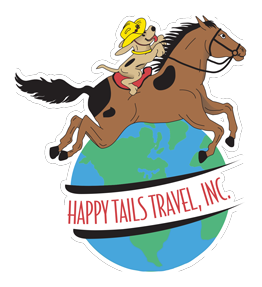
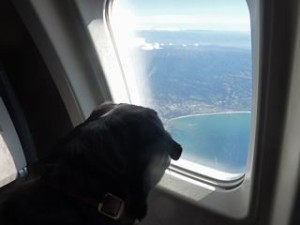
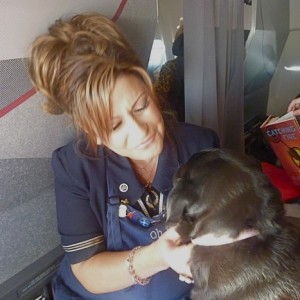
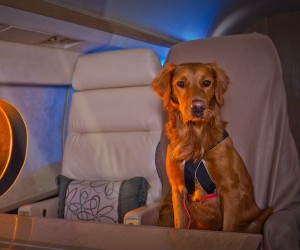
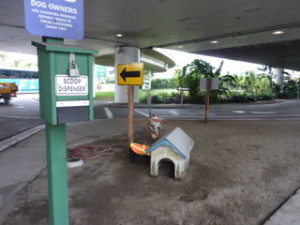
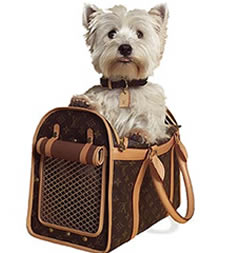
Pingback: 10 useful tips to travel with pets | air travel tips - compare airlines
Great idea! Thanks for the info!